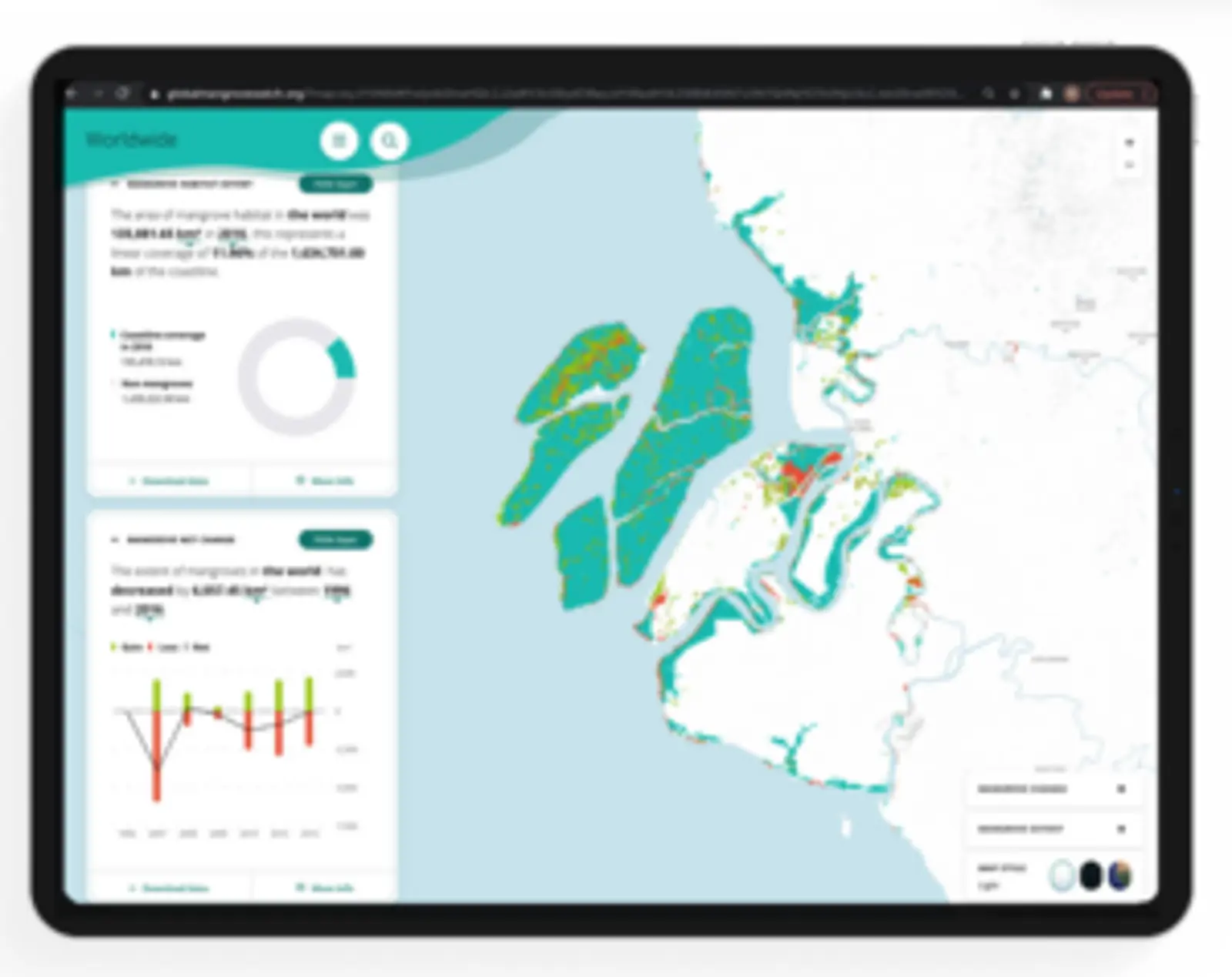Solutions Take Centre Stage at COP30, Marking a New Era of Accelerated Climate Action. Read it here.
Solutions Take Centre Stage at COP30, Marking a New Era of Accelerated Climate Action. Read it here.
Report: Humans responsible for over 60% of mangrove loss
Monday, 26 July 2021 | By Climate Champions
We know the problems, but we also know the solutions. The challenge is turning these solutions into actions, by swaying leaders at all levels of society to protect the mangroves still standing and restore what has been lost, argues a new report from the Global Mangrove Alliance (GMA)
The State of the World’s Mangroves, written by 100 authors from around the world, offers the most up to date information on what we know about mangrove forests and what’s being done to reverse the downward trends impacting the forests and the local communities who depend on them.
Mangrove forests are critical ecosystems, both for biodiversity and for humanity. Vast areas have been lost, but things are changing, finds the report. As we begin to realize their full value—as carbon stores, fish factories, coastal defenses and more—ever-greater efforts are being made to protect what remains.
Humans, according to the report, are responsible for over 60% of mangrove loss. Primary causes include conversion to farmland, agriculture and/or urbanization which has led to the loss of 4.3% of mangroves globally in the two decades leading up to 2016, with much larger losses prior to that. Today there are 136,000km2 of mangroves remaining worldwide—an area about the size of Costa Rica—and nearly 20% of these forests are found in Indonesia.
The State of the World’s Mangroves draws on maps from Global Mangrove Watch, an online platform that provides access to a variety of datasets detailing mangrove values, threats and opportunities for conservation and restoration.
The maps show that average rates of mangrove loss are slowing world-wide. Alongside losses, they show a growing number of locations where mangroves are expanding, colonizing new sediments or inland areas as a result of rising sea levels.
“We are at a nexus. Science has provided us with compelling numbers describing the immense value of mangroves to people – for carbon, climate adaptation, fish, timber, coastal protection, tourism, and more. The State of the World’s Mangroves report lays a clear message for world leaders convening on climate and biodiversity. Mangroves are a great asset but if we fail to properly value and protect them, we’ll lose more than any financial investment that’s been made in mangroves to date. This is our last best chance to create positive, lasting change,” said Mark Spalding, Lead Marine Scientist for The Nature Conservancy.
Other key findings include:
UN Secretary General’s Special Envoy for the Ocean Ambassador Peter Thomson wrote the report’s foreword warning how quickly mangroves could be lost beyond our ability to bring them back. “If their demise is a crime against nature, then surely it’s also a crime against the best interests of humanity,” he wrote.
“Conserving and restoring mangroves at scale depends on collaboration, and innovative partnerships like this one are critical to meeting the global challenge. By directly linking the needs and the experiences of local and indigenous peoples with cutting-edge science, together we can help drive the most forward-thinking national and international policies,” said Karen Douthwaite, Lead Specialist, Oceans for WWF.
“By working with communities, we can safeguard and restore the world’s mangroves and improved the livelihoods of coastal people,” said Leah Glass, Technical Advisor for Mangroves and Blue Carbon for Blue Ventures.
The Global Mangrove Alliance released the report in anticipation of critical convenings including the IUCN World Conservation Congress, Convention on Biological Diversity COP15, and COP26. Alliance members are calling on local and national government leaders to accelerate their efforts to protect and restore mangroves and challenging the private sector to increase investment in keeping mangroves standing.
Read the full report here.
The GMA is a partner initiative of the Race to Resilience. In 2018, Conservation International (CI), the International Union for Conservation of Nature (IUCN), The Nature Conservancy (TNC), Wetlands International, and World Wildlife Fund (WWF) formed the Global Mangrove Alliance (GMA). Today, over 25 member organizations share the twin goals of restoring and recovering 50% of recent mangrove loss and doubling the area of mangroves under effective and equitable protection and management.
